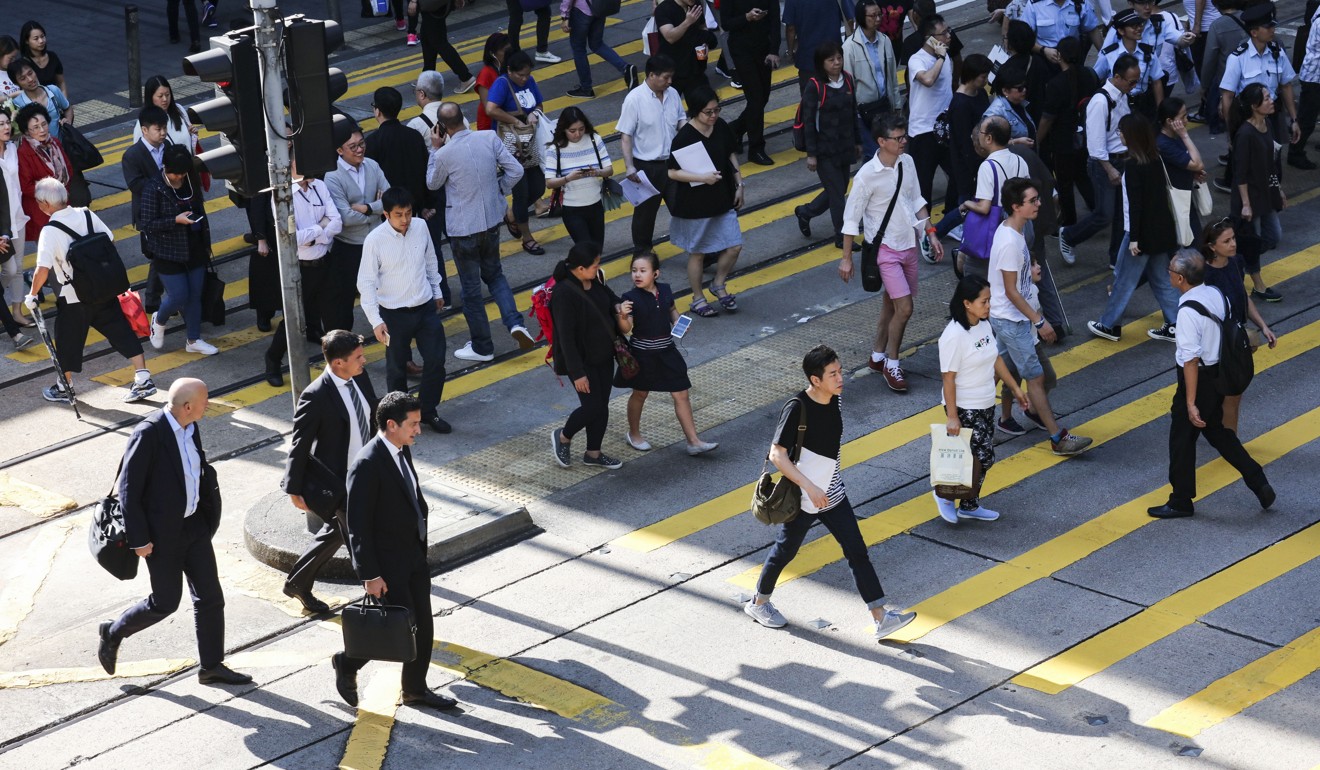
Hong Kong’s top 1.5 per cent contribute more than a third of city’s income tax revenue
Data shows the highest earners paid HK$22.8 billion of the city’s HK$63.6 billion in salaries tax – but some lawmakers say the richest need to pay more
Over a third of Hong Kong’s income tax revenue was paid by the top 1.5 per cent of taxpayers, according to the latest government figures, leading legislators to call for the city’s highest earners to pay more.
The top taxpayers paid HK$22.8 billion (US$2.9 billion) of the HK$63.6 billion, or 36 per cent, in tax revenue collected from salaries in the 2016-17 year, according to figures from the Financial Services and the Treasury Bureau made available to lawmakers on Tuesday.
Cross-border tech and taxes: the big Hong Kong debates at Boao’s Greater Bay Area brainstorming session
Some 29,200 taxpayers’ salaries were so high that they were taxed at the standard rate of 15 per cent in 2016-17.
They accounted for about 1.5 per cent of all 1.89 million salaries taxpayers, according to a document prepared by the bureau for a Legislative Council bills committee.
While more than half of the top 1.5 per cent had an annual pay of between HK$2 million and HK$5 million, bureau figures showed some 2,700 were paid more than HK$10 million.
Like US and Hong Kong, China is cutting taxes for its middle class too
Hong Kong is known for its simple and low tax system. Direct tax is charged under three categories: salaries tax, profit tax and property tax.
Salaries tax follows a progressive system, starting at 2 per cent and ending at 17 per cent, or at a standard rate of 15 per cent. Taxpayers are charged whichever is lower.

There is also a so-called personal assessment arrangement to help ease taxpayers’ burden. Personal assessment is not a tax levy. It is a relief for certain individual taxpayers who are subject to profit tax and property tax.
Lawmaker Wu Chi-wai, of Democratic Party, said the current tax system seemed to favour the rich. He said the “standard rate” should be removed to make the tax regime fairer.
“We tax people at progressive rates and I don’t see why we should have a standard rate there to cap the tax payment those high earners should pay,” Wu said.
Hong Kong is right not to follow the US in cutting taxes
Labour Party lawmaker Fernando Cheung Chiu-hung also questioned if the prevailing practice could worsen the income gap. “One function of tax system is to redistribute wealth, but it seems our system fails to achieve that aim,” he said.
Officials have argued the standard income tax rate was in line with the profits tax rate, which is set at a flat 16.5 per cent.

If the standard rate cap is removed, the bureau estimated that income tax revenue would increase by about HK$1.6 billion, according to the bureau document.
It’s a shame Hong Kong budget giveaways don’t solve the problem of its perennial surpluses
The bureau also said it would be “technically not feasible to assess the impact on the post-tax Gini coefficient”, which measures income inequality, mainly because the coefficient is based on income data collected separately in population censuses.
A society with no income gap will have a Gini coefficient at zero, while the most unequal society will have a coefficient of one. The coefficient for Hong Kong was 0.54 in 2016, a record high that indicates the income gap is growing.


